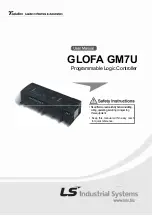
LARA-R2 series - System Integration Manual
UBX-16010573 - R12
Design-in
Page 130 of 157
2.15.2
Layout checklist
The following are the most important points for a simple layout check:
Check 50
nominal characteristic impedance of the RF transmission line connected to the
ANT1
and the
ANT2
ports (antenna RF interfaces).
Ensure no coupling occurs between the RF interface and noisy or sensitive signals (primarily analog audio
input/output signals, SIM signals, high-speed digital lines such as SDIO, USB and other data lines).
Optimize placement for minimum length of RF line.
Check the footprint and paste mask designed for LARA-R2 series module as illustrated in section 2.11.
VCC
line should be as wide and as short as possible.
Route
VCC
supply line away from RF lines / parts and other sensitive analog lines / parts.
The
VCC
bypass capacitors in the picoFarad range should be placed as close as possible to the
VCC
pins,
in particular if the application device integrates an internal antenna.
Ensure an optimal grounding connecting each
GND
pin with application board solid ground layer.
Use as many vias as possible to connect the ground planes on a multilayer application board, providing a
dense line of vias at the edges of each ground area, in particular along the RF and high speed lines.
Keep routing short and minimize parasitic capacitance on the SIM lines to preserve signal integrity.
USB_D+
/
USB_D-
traces should meet the characteristic impedance requirement (90
differential and
30
common mode) and should not be routed close to any RF line / part.
HSIC traces must be designed as 50
nominal characteristic impedance transmission lines.
Keep the SDIO traces short, avoid stubs, avoid coupling with any RF line / part and consider low value
series damping resistors to avoid reflections and other losses in signal integrity.
Ensure appropriate RF precautions for the Wi-Fi and Cellular technologies coexistence.
Ensure appropriate RF precautions for the GNSS and Cellular technologies coexistence as described in the
GNSS Implementation Application Note
Route analog audio signals away from noisy sources (primarily RF interface,
VCC
, switching supplies).
The audio outputs lines on the application board must be wide enough to minimize series resistance.
2.15.3
Antenna checklist
Antenna termination should provide a 50
characteristic impedance with VSWR at least less than 3:1
(recommended 2:1) on operating bands in the deployment geographical area.
Follow the recommendations of the antenna producer for correct antenna installation and deployment
(PCB layout and matching circuitry).
Ensure compliance with any regulatory agency RF radiation requirement, as detailed in sections 4.2.2
and/or 4.3.1 for products marked with the FCC and/or IC.
Ensure high and similar efficiency for both the primary (
ANT1
) and the secondary (
ANT2
) antenna.
Ensure high isolation between the primary (
ANT1
) and the secondary (
ANT2
) antenna.
Ensure a low Envelope Correlation Coefficient between the primary (
ANT1
) and the secondary (
ANT2
)
antenna: the 3D antenna radiation patterns should have radiation lobes in different directions.
Ensure high isolation between the cellular antennas and any other antenna or transmitter.
















































